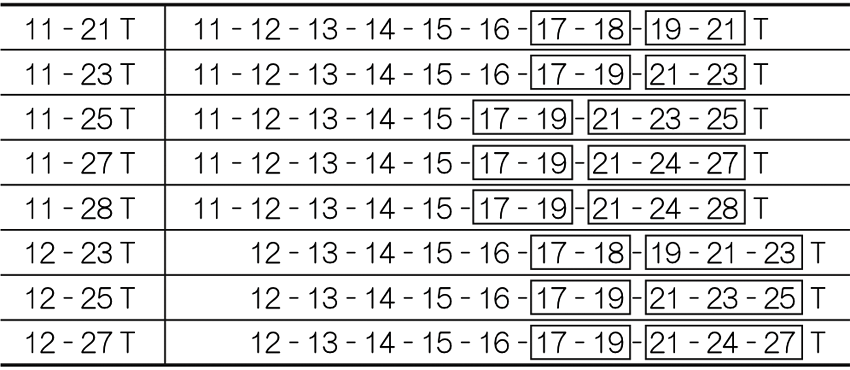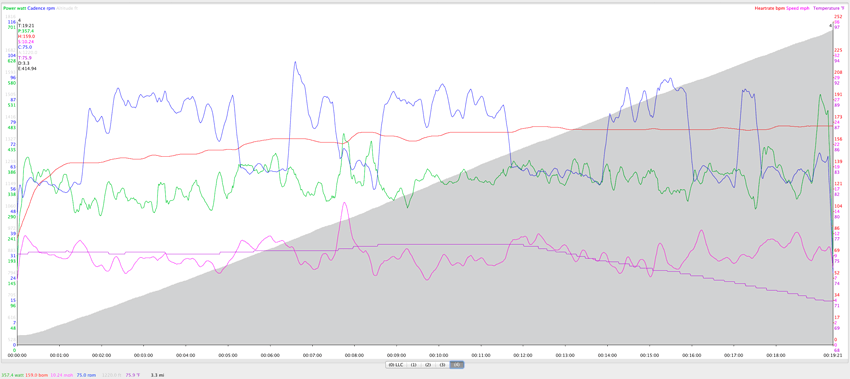How to Ride Faster — Consistent Power
Competitive? Or just looking for a personal best or to improve your riding time?
Over the years, I’ve observed that many riders (indeed most riders), be they road or mountain bikers, simply give away time to their competitors or personal best attempts. Few riders seem to be aware of their own behavior in this regard.
It’s easy enough to gauge as one gains steadily on a rider ahead, but a power meter quantifies it: the rabbit* or victim* surges to 300 watts as the road steepens, but as soon as it flattens or dips, the power plummets to the 150-200 watt range, or even lower. I see this cycle repeated every day, and each time I’m 50 or 100 feet closer. It’s so easy to close the gap on such riders that it’s almost like cheating. It happens on any grade and in any conditions. I make it a daily strategy game (complete with my own self-imposed rules) to catch such riders. Which I do.
If you’re competitive, race psychology is critical: having a rider behind you suddenly be 50 feet closer is disconcerting, especially if you telegraph your difficulties by glancing back (which clues in your competitor that you’ve lost confidence). So don’t glance back (except perhaps surreptitiously and infrequently at corners, etc).
So mellow out the hardest efforts (just slightly), and set a minimum effort level below which you do not drop, which should be only a modestly lower effort. Watch minutes drop off your climb, because the average power will be substantially higher. It’s average power that determines your time.
The next time you’re riding, observe yourself: maintain a constant effort, not a constant cadence in the same gear. You might have to shift gears to maintain the same power output— don’t get trapped into thinking that spinning a little faster will do it, because few riders that I have observed can maintain the same power output while spinning faster.
A power meter is a valuable tool for improving your consistency.
Don’t overexert to bluff
In a similar vein, don’t make a stupid pass that overtaxes your ability: today I was passed on a climb by a rider that I could see was overexerting himself (I’ve trained myself over the years to gauge rider body language, and I’d say I have a near-perfect accuracy rate).
I guess he felt good passing me for about 2 minutes, but all he accomplished was to tire himself out, and thus be forced to reduce the pace. He was 5 minutes behind me by the Old La Honda summit (on a ~22 minute ascent on this day for me). That sort of dilettante pass rarely works; it carries a risk of inciting the passed rider to up the pace, and burning out is not a strategy. Ride at a pace that can be sustained for the duration.
* A “rabbit” is a fast rider to chase down (hopefully), whereas a “victim” is a slower rider to be passed while one looks for another rabbit or victim. A really slow rider is a road hazard.
Peter K in Sweden writes:
I'm also a photographer and a cyclist, and follow your photo blog and cycling blogs - thanks for interesting reading.
I really agree on the "keep power consistent" in your last post, and use Polar power meters to do this, I have them on 3 of my bikes, using audio feedback for signaling when I'm under or over levels in power I setup as my goal, normally +- 30W to not get annoyed by the beep; it makes it possible to just look at the road all the time, a safety concern. Also, when I ride my TT bike, it's the only option.
I'm thinking of the fluctuating cadence in your La Honda climbs; you keep the power very stationary, but seem to alter the cadence between maybe roughly 60 and 90; is this a planned strategy? The benefits?
DIGLLOYD: cadence on a climb whose steepness continually varies by a few degrees of slope cannot easily be kept constant; to maintain the same power at the same cadence would require much tighter gearing so as to offer finer increments of leverage (gear inches).
The DuraAce 11-28 cassette on my road bike has an 11% to 16.7% difference between the larger gears: 28-24-21-19-17. Thus shifting from a 24 to a 28 takes cadence from 80 to 93 all by itself, assuming exactly the same power. Even an 11-21 cassette has a 10% difference between the 19-21 gears.
The lower cadence in the 60-70 range reflects my use of the big front ring; I often stand for several minutes at a time, as this is comfortable and efficient for me; I like to alternate standing/seating so as to work the muscles differently.










